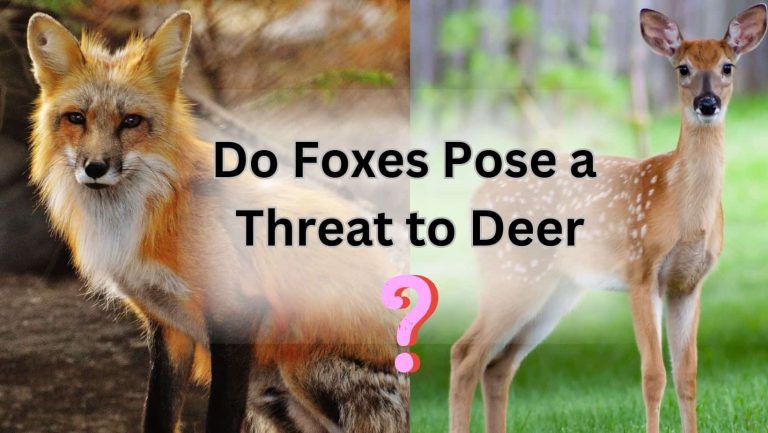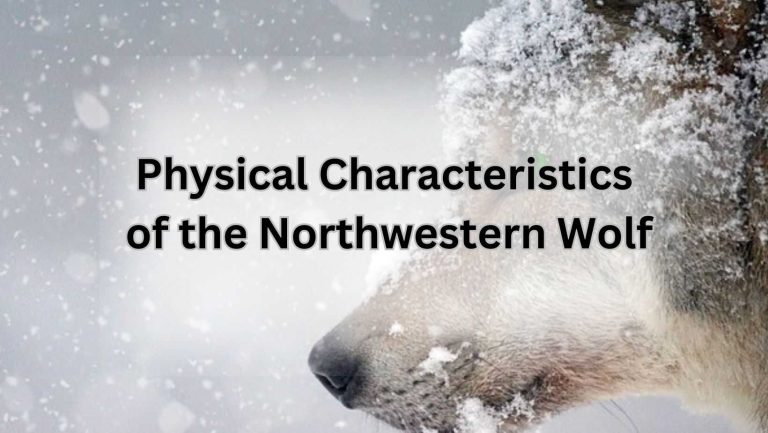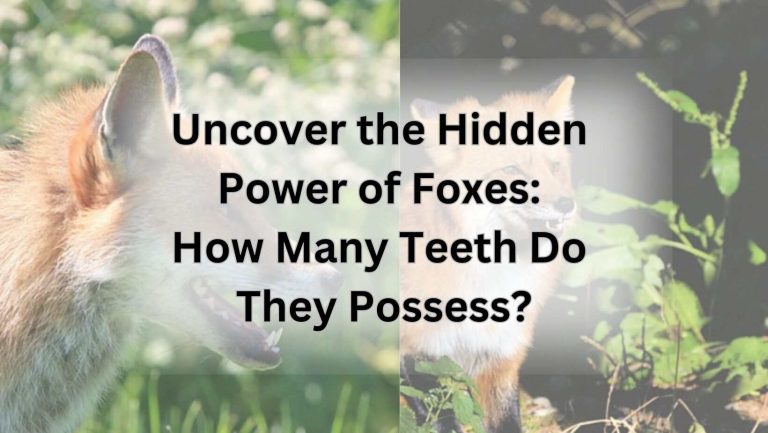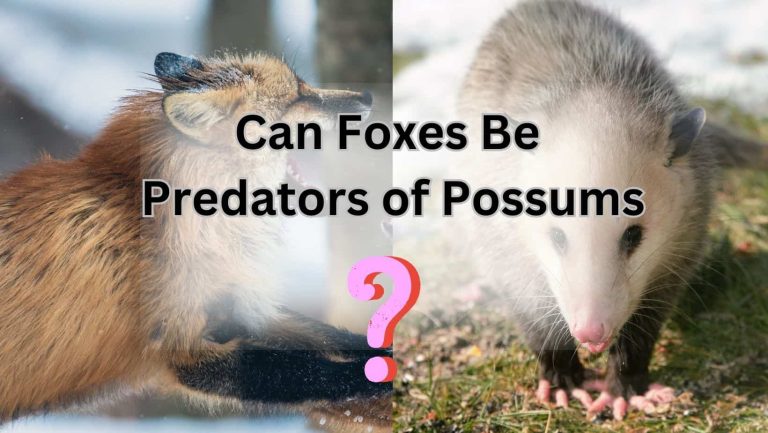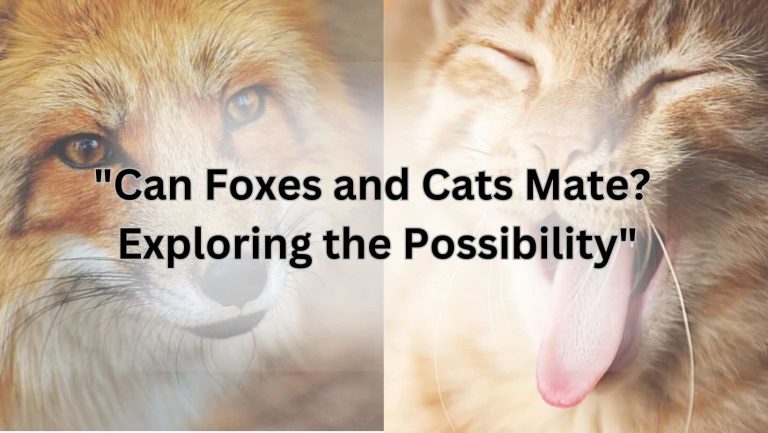Mystery of vanishing foxes: Where do they disappear to?
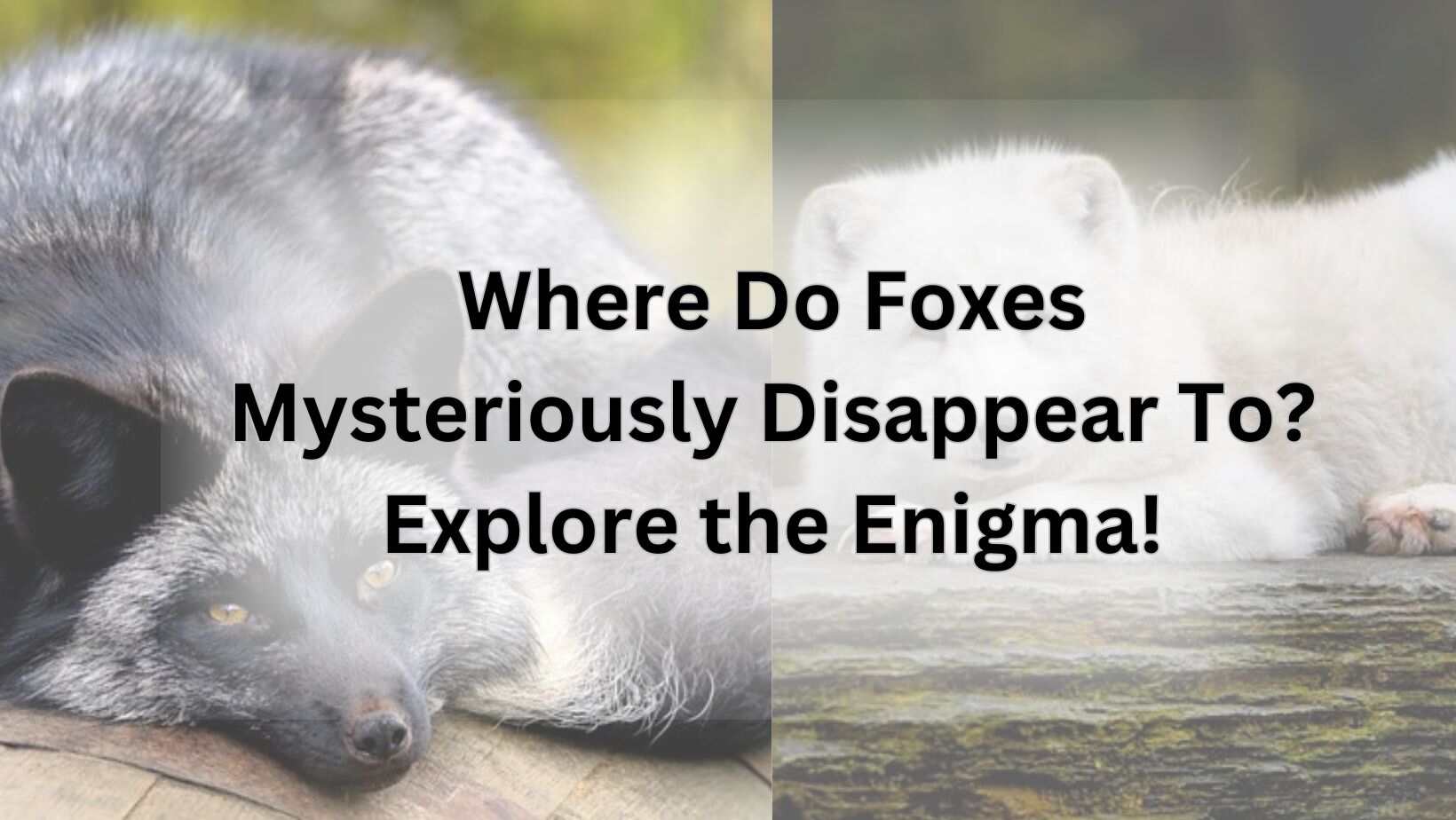
Habitat Loss: A Major Factor in the Disappearance of Foxes
Why do foxes suddenly disappear? The answer lies in the significant impact of habitat loss on their populations. Let’s delve into the various aspects contributing to this concerning trend.
Deforestation: A Dire Threat to Foxes
Imagine a lush forest where foxes roam freely, hunting for food and raising their young. Now, picture that same forest slowly being cleared to make way for agriculture or urban development. This is the harsh reality faced by many fox populations worldwide. Deforestation not only destroys the homes of these cunning creatures but also disrupts their food sources and breeding grounds.
Urbanization: Foxes Forced into Urban Jungles
As cities expand and suburbs encroach on natural habitats, foxes are left with no choice but to adapt to urban life. They scavenge for food in garbage bins, dodge traffic on busy streets, and navigate the concrete jungle in search of shelter. The stress of urban living takes a toll on these wild animals, leading to a decline in their numbers.
Climate Change: A Silent Threat to Fox Populations
With temperatures rising and weather patterns becoming increasingly erratic, foxes face new challenges in their struggle for survival. Shifts in climate can disrupt the availability of prey, alter the vegetation cover, and even lead to the spread of diseases among fox populations. These changes make it harder for foxes to thrive in their natural habitats, pushing them towards disappearance.
Human Interference
Are Humans the Main Culprits?
Humans, the ultimate tricksters in the animal kingdom, have played a significant role in the sudden disappearance of our foxy friends. Whether it’s for sport, fur, or simply because they see them as pests, humans have been known to interfere with the delicate balance of nature.
Hunting: A Deadly Game
Imagine being a sly fox, navigating through the woods, only to be met with the sharp crack of a hunter’s rifle. Unfortunately, hunting is a major factor in the decline of fox populations. These beautiful creatures are often targeted for their fur or considered a nuisance by farmers, leading to a decrease in their numbers.
Trapping: Caught in a Snare
Foxes are intelligent creatures, but even their cunning nature can’t always protect them from the traps set by humans. Trapping, whether for fur or to control populations, poses a serious threat to foxes. Once caught, they have little chance of escape, leading to a sudden disappearance from their natural habitats.
Vehicle Collisions: The Deadly Road Trip
Foxes are curious creatures, known to roam far and wide in search of food and shelter. Unfortunately, this curiosity often leads them onto busy roads where they meet their untimely demise in collisions with vehicles. The increase in urbanization and road networks has made this a common cause of fox disappearances.
As a Canid Wild Life Lover with 20 years of experience, it breaks my heart to see these magnificent creatures facing such threats from human interference. It’s essential for us to raise awareness about the impact of our actions on fox populations and take steps to protect them from harm. Let’s work together to ensure that foxes can roam freely in their natural habitats without the fear of sudden disappearances.
3. Disease Outbreaks
3.1 Rabies
Why do foxes suddenly vanish like a magician’s trick? Well, one possible culprit could be a sneaky little disease called rabies. This viral infection can spread like wildfire among fox populations, causing chaos and leading to a sudden decline in their numbers. Imagine a fox party where everyone is suddenly feeling a bit…rabid. Not a fun situation, right?
3.2 Canine Distemper
Ever wondered why foxes might pull a disappearing act out of the blue? Canine distemper might just be the answer. This nasty virus can wreak havoc on fox communities, causing illness and death among these furry creatures. It’s like a fox version of the flu season, but way more serious. So, if you notice foxes vanishing from your neighborhood, canine distemper could be the sneaky culprit.
3.3 Sarcoptic Mange
What’s the deal with foxes vanishing into thin air? Well, one possible reason could be sarcoptic mange, a pesky skin disease caused by mites. This itchy condition can spread like wildfire among foxes, causing them to lose their fur and eventually succumb to the harsh realities of the wild. It’s like a bad case of the chicken pox, but way more dramatic. So, if you’re missing those sly foxes in your backyard, sarcoptic mange might be to blame.
Predators: The Fox’s Greatest Threats
4.1 Coyotes: The Crafty Canine Predators
Why do foxes suddenly disappear when coyotes are around? Well, these crafty canines are known for being skilled hunters, and they see foxes as competition for food and territory. When coyote populations increase, fox numbers tend to decline as they fall victim to these larger predators. It’s a tough world out there for our foxy friends!
4.2 Wolves: The Majestic Yet Menacing Predators
What happens when wolves enter the picture? Foxes may decide it’s time to make themselves scarce. Wolves are powerful predators that can easily outcompete foxes for resources. With their pack mentality and hunting prowess, wolves pose a significant threat to fox populations. It’s like a high-stakes game of survival in the animal kingdom!
4.3 Birds of Prey: The Aerial Assassins
Imagine looking up and seeing a bird of prey circling overhead. For foxes, this sight spells trouble. Birds of prey like eagles, hawks, and owls are skilled hunters that can swoop down and snatch up a fox in the blink of an eye. These aerial assassins pose a constant threat to foxes, making them think twice about sticking around in open spaces.
As a Canid Wildlife Lover, you understand the delicate balance of predator-prey dynamics in the wild. Coyotes, wolves, and birds of prey all play a crucial role in maintaining ecosystem health, even if it means foxes sometimes have to disappear to stay safe. Remember, nature has its way of keeping things in check, even if it means our foxy friends have to be a bit elusive at times.
Food Scarcity
Decline in Prey Population
Ever wondered why those sly foxes suddenly vanish into thin air? Well, one possible reason could be the dwindling numbers of their favorite snacks! Foxes are cunning predators that rely heavily on the availability of prey for their survival. When the prey population takes a hit, it’s no surprise that our foxy friends might start disappearing mysteriously. The delicate balance of nature can easily be disrupted by factors such as habitat loss, climate change, or even overhunting by humans. So, next time you spot a fox pulling a vanishing act, maybe it’s time to check on the local rabbit or rodent population!
Competition with Other Predators
What if I told you that foxes have some fierce competition out there in the wild? It’s a dog-eat-dog world, or rather, a fox-eat-fox world! With predators like coyotes, wolves, and even birds of prey lurking around, foxes have to fight tooth and nail for their share of the food. If the competition gets too tough, our cunning foxes might decide to make a discreet exit from the scene. So, the next time you see a fox disappearing into the shadows, remember that it might be running away from some fierce rivals!
Impact of Pesticides on Food Sources
Picture this: a fox roaming around, looking for a tasty meal. But what if that meal is contaminated with harmful pesticides? It’s no secret that pesticides can wreak havoc on the ecosystem, affecting not only the prey but also the predators higher up the food chain. Foxes, being the opportunistic feeders they are, might unknowingly ingest these toxic substances, leading to a decline in their population. So, if you notice a sudden disappearance of foxes in your area, it might be time to reconsider the use of harmful chemicals in agriculture.
And there you have it, folks! The not-so-mysterious reasons behind why foxes might suddenly vanish from sight. Remember, it’s all about the delicate balance of nature, and we play a crucial role in ensuring the survival of these fascinating creatures. So, let’s keep our eyes peeled for any signs of our foxy friends and do our part in preserving their habitat. Happy fox-watching!
6. Dispersal and Migration
Have you ever wondered why foxes suddenly disappear from an area, leaving wildlife enthusiasts puzzled? Let’s delve into the fascinating world of fox dispersal and migration to uncover the mysteries behind their vanishing acts.
Seasonal Movements
What prompts foxes to embark on seasonal movements, traversing vast distances in search of food and suitable habitats? These nomadic creatures are known for their adaptive behavior, following the changing seasons to ensure their survival.
Long-Distance Migration
Did you know that some fox species engage in long-distance migration, traveling hundreds of miles to find new territories? This remarkable journey showcases their resilience and ability to thrive in diverse environments, making them true wanderers of the wild.
Young Foxes Seeking New Territories
Why do young foxes often disperse from their birthplace in search of new territories? This natural behavior helps prevent inbreeding and ensures genetic diversity among fox populations, contributing to their long-term survival.
Impact of Urbanization on Dispersal Patterns
How does urbanization affect fox dispersal patterns, forcing them to adapt to human-dominated landscapes? As cities expand, foxes must navigate through urban areas, facing new challenges and opportunities in their quest for survival.
Impact of Human Development on Migration Routes
What role does human development play in altering fox migration routes and disrupting their natural behavior? With increasing human activities encroaching upon wildlife habitats, foxes must adapt to changing landscapes, leading to shifts in their migration patterns.
By understanding the complexities of fox dispersal and migration, we can appreciate the resilience and adaptability of these cunning creatures. So, the next time you spot a fox disappearing into the woods, remember that it’s all part of their natural instincts to thrive in a dynamic world.
Environmental Pollution and its Impact on Fox Disappearance
Chemical Contamination: A Silent Killer
Have you ever wondered why foxes suddenly vanish from their habitats? One possible culprit could be chemical contamination. Chemicals from industries, agriculture, and households can seep into the environment, affecting the food chain. Foxes, being at the top of the food chain, are particularly vulnerable to these contaminants. Pesticides, herbicides, and other toxic chemicals can accumulate in their bodies, leading to health issues and ultimately causing their disappearance.
Heavy Metals: A Heavy Burden on Foxes
Do heavy metals like lead, mercury, and cadmium ring a bell when thinking about fox disappearances? These toxic substances can be found in water sources, soil, and even in the food that foxes consume. Heavy metal poisoning can have devastating effects on fox populations, leading to decreased reproductive success, weakened immune systems, and ultimately contributing to their sudden disappearance.
Pesticides: A Deadly Threat to Foxes
When you think of fox disappearances, do pesticides come to mind? These chemicals are designed to kill pests, but they can also harm non-target species like foxes. Pesticides can disrupt the balance of ecosystems, affecting the availability of prey for foxes. Additionally, direct exposure to pesticides can lead to poisoning and death in fox populations, causing them to vanish without a trace.
As a Canid Wild Life Lover with 20 years of experience, it’s crucial to raise awareness about the impact of environmental pollution on fox populations. By advocating for sustainable practices, reducing chemical use, and promoting wildlife conservation efforts, we can help protect these beautiful creatures from the dangers of pollution. Let’s work together to ensure that foxes thrive in their natural habitats for generations to come!
Climate Change
Shifts in Temperature and Precipitation
Ever wondered why those sly foxes seem to be disappearing out of thin air? Well, climate change might have something to do with it! As temperatures rise and rainfall patterns shift, the habitats that foxes rely on for food and shelter are being altered. This can lead to a decrease in available resources, making it harder for foxes to survive and thrive in their natural environment.
Altered Habitats
Picture this: foxes roaming through lush forests and open fields, hunting for their next meal. Now, fast forward to a world where their habitats are disappearing due to climate change. With deforestation, urbanization, and other human activities encroaching on their territories, foxes are finding it increasingly challenging to find suitable places to live and raise their young. It’s like a game of hide-and-seek, but with much higher stakes!
Impact on Fox Behavior and Survival Strategies
Have you ever considered how climate change affects the behavior of these cunning creatures? Foxes are known for their adaptability, but even they can struggle to cope with the rapid changes brought about by a warming planet. From altering their hunting patterns to searching for new territories, foxes are forced to evolve in order to survive. It’s like a real-life drama playing out in the animal kingdom!
So, next time you notice a decrease in the fox population in your area, don’t just brush it off as a mystery. Take a moment to consider the impact of climate change on these fascinating creatures and what you can do to help protect their habitats. After all, we’re all in this together, fighting to ensure a brighter future for our furry friends.
9. Natural Disasters
9.1 Wildfires
Ever wondered what happens to foxes when wildfires strike? These natural disasters can have a devastating impact on wildlife, including our beloved foxes. Picture this: a wildfire raging through the forest, leaving destruction in its wake. How do foxes cope with such a sudden and intense threat to their habitat?
9.2 Floods
What happens to foxes when floods come rushing in? These sudden deluges of water can displace animals from their homes and wreak havoc on ecosystems. Imagine a fox trying to navigate through a flooded landscape, searching for higher ground. How do they survive such a watery catastrophe?
9.3 Severe Weather Events
When severe weather strikes, foxes are faced with a new set of challenges. From intense storms to extreme heatwaves, these weather events can have a significant impact on fox populations. How do foxes adapt to such unpredictable and harsh conditions? What strategies do they employ to weather the storm?
In the wild world of foxes, natural disasters are just another part of the ever-changing landscape. As a Canid Wildlife Lover with 20 years of experience, I’ve seen firsthand the resilience of these crafty creatures in the face of adversity. From wildfires to floods, foxes have a knack for survival that never ceases to amaze me.
So, the next time you hear about a natural disaster striking, spare a thought for our furry friends in the wild. They may disappear suddenly, but rest assured, they are out there, finding a way to thrive in a world that can be as unpredictable as it is beautiful. And remember, when it comes to foxes and natural disasters, resilience is their middle name.
Interactions with Domestic Animals
Have you ever wondered why foxes suddenly disappear from certain areas? One possible reason could be their interactions with domestic animals. Foxes may come into conflict with pets, leading to their disappearance from an area. When foxes encounter domestic animals such as dogs or cats, it can result in competition for resources or even direct confrontations that may drive the foxes away.
Understanding the Dynamics
It’s essential to understand the predator-prey dynamics at play when foxes interact with domestic animals. Foxes are known to be opportunistic hunters, and they may see pets as potential prey. This can lead to conflicts that impact the fox population in a particular area. Additionally, the presence of domestic animals can also alter the foxes’ behavior, causing them to avoid certain locations to avoid confrontation.
Disease Transmission
What if I told you that disease transmission could be another reason for the sudden disappearance of foxes? Foxes are susceptible to various diseases that can be spread through interactions with other animals, including domestic pets. When foxes contract diseases, it can lead to a decline in their population as the sick individuals may die or move away to prevent further spread of the illness.
Impacts on Fox Populations
The spread of diseases among fox populations can have significant impacts on their numbers. Diseases like mange or rabies can quickly spread through a fox population, leading to mass die-offs or dispersal. This can result in sudden disappearances of foxes from certain areas as they try to escape the disease outbreak.
Competition for Resources
Ever thought about how competition for resources could affect fox populations? Foxes rely on a variety of resources to survive, including food, shelter, and territory. When these resources become scarce or are monopolized by other animals, foxes may be forced to leave an area in search of better opportunities.
Resource Scarcity
Competition for resources can be fierce among wildlife species, and foxes are no exception. If food sources are depleted or if other animals dominate the available resources, foxes may have no choice but to move on to find a more hospitable environment. This can lead to sudden disappearances of foxes from their usual habitats.
Conflict with Pets
Could conflicts with pets be driving foxes to suddenly vanish? The presence of domestic animals can sometimes lead to conflicts with wildlife, including foxes. When pets and foxes clash, it can result in injuries or even fatalities, prompting the foxes to retreat to safer areas.
Coexistence Challenges
Coexisting with wildlife can be challenging, especially when conflicts arise between pets and wild animals like foxes. Finding ways to manage these interactions can help prevent sudden disappearances of foxes from neighborhoods or natural areas. By promoting responsible pet ownership and implementing measures to deter wildlife encounters, we can help foxes thrive in their habitats.

